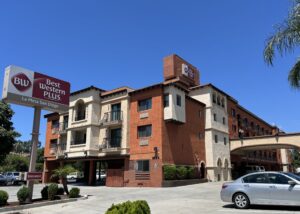LA Projects, Brands Lead H1 2018 California Development
LA Projects, Brands Lead H1 2018 California Development
HotelNewsNow
07/31/18
LA Projects, Brands Lead H1 2018 California Development
By Sean McCracken
http://www.hotelnewsnow.com/Articles/288600/LA-projects-brands-lead-H1-2018-California-development
LOS ANGELES—California remains one of the hottest areas for hotels in the U.S.
Alan Reay, president of Atlas Hospitality Group, said he’s blown away by the continued strong pace of development in the state.
“We’ve not seen numbers like this in the 20 years we’ve been tracking in California,” he said, referencing his company’s recently released midyear 2018 development survey. “It’s nothing short of phenomenal.”
According to that survey, the first half of 2018 saw a 41% year-over-year increase in hotels under construction, up to 183 from 130, with rooms up 42% from 18,271 to 25,872.
But while the numbers are clearly noteworthy and a sign of the continued strong metrics in the state, there are obviously concerns attached.
“You’re always concerned in the back of your mind about oversupply,” Reay said.
1. Los Angeles keeps up blazing pace
Los Angeles County continued to see significant hotel construction and openings through the first half of the year. Four hotels with a combined 727 rooms opened in the period, the largest of which was the 288-room Sheraton Los Angeles San Gabriel.
There are 37 hotels with 5,631 rooms under construction in Los Angeles County, including the 288-room Courtyard by Marriott in Monterey Park. The county also leads the state in hotels in planning with 246 properties, which comprise 37,682 rooms.
Reay said he is continually surprised by both the development pace and the ability to absorb supply in Los Angeles.
“I don’t think any market has added more rooms more quickly than downtown LA, and yet revenues for everyone continue to go up,” he said.
2. Top brands dominate
Reay said one of the top trends from his survey of developers is a strong preference for Marriott International, Hilton and InterContinental Hotels Group brands.
He said select-service brands are particularly popular in suburban markets, while there is a wave of full service in the downtown areas of top markets and areas with “proximity to convention centers.”
“But outside those downtowns, it’s those midsize 100- to 150-room Marriott, Hilton and IHG brands,” he said.
3. Top markets outside LA
While Los Angeles continues to lead the way, other areas of Southern California are also seeing significant development.
San Diego County saw four hotels with 627 total rooms open in the first half of 2018, including the 250-room Legoland Castle Hotel in Carlsbad, California. That county has 21 hotels with 3,410 rooms under construction.
Three hotels with 445 rooms opened in Orange County, including the 164-room Hampton Inn & Suites Orange County Airport in Irvine, California. That county has nine hotels with 2,391 rooms under construction.
4. Investors should prepare for a downturn
Despite the strong continued interest from investors in the state, Reay said it would be wise for anyone starting a project to prepare for a longer hold on upcoming properties to counteract the effects of any upcoming downturn.
“Having gone through the last couple cycles, I can’t see (this level of performance) continuing at this pace,” he said. “So if you’re building a new product, be very mindful of how many units are coming into that market, and make sure your financing and down payment are geared toward a long-term hold.”
5. New product spurring renovation activity
Reay said a trend his company noticed that didn’t show up in the data of the survey is that the difficulty and cost of building new hotels in California has spurred many investors to instead sink their money into refreshing and repositioning older properties.
“Some projects have been put on hold because of (increasing) construction costs, and (investors) are looking at older product, saying they can put a lot of money into them and still be below the cost of development,” he said.
He said this approach is vital in areas of the state where development is almost impossible, including coastal areas and San Francisco.


